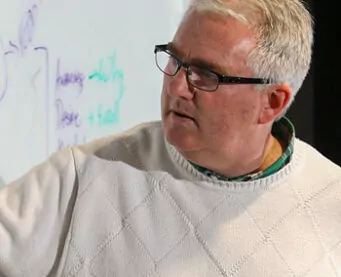The only constant in agriculture is change. The ag sector circulates on a carousel of challenge, technology and adaptation, evolving with every rotation – the fourth industrial revolution, if you will. On this week’s AcreForward podcast, Laura Handke, from our marketing support firm, Aggregate, sat down with Nir Naor, who has helped to pioneer the artificial intelligence (AI) that is revolutionizing how insights drive decision-making on the farm.
As one of the first AI experts to join the Taranis team, Nir has been instrumental in the continued development of Taranis’ AI.
What is AI?
Laura shared that in preparation for the conversation with Nir, she sought out the questions farmers have about AI and how those unanswered questions have created barriers for implementation.
“What I found—what I heard from the social and internet chats – was that farmers and the general public don’t really know what AI is. Is it a software? An algorithm? What is AI?,” she asked Nir.
Nir offered a simplified answer, “AI is the continued training of machines that can use the information they are fed to learn, evolve, and simulate human intelligence,” he told her. “AI adds a layer of depth to existing technologies. It enhances decision-making and adds value by uncovering the insights hidden with the data.”
With more than 20 years of experience and work, following and often creating cutting-edge and high-tech solutions, Nir summed his continued excitement for AI. “I got to where I am today because I enjoy solving riddles,” he shared, adding that agriculture has been and continues to be one of the greatest puzzles. “AI is an approach that allows something different to be done with data.”
20 Million High-Resolution Images and 200 Million Data Points
Nir shared that in the ten years Taranis has been in existence, the company has excelled in creating the worlds largest library of high-resolution imagery, imagery that the company uses to train the AI it uses.
“Five years ago Taranis had around 10,000 images and now we’re 100-fold above that number. We are digesting millions of images and our library has grown to more than 200 million high quality images that we are using to fine tune our AI so that it can do a better job of identifying and analyzing,” he said.
Taranis uses AI to analyze season-long threats, advantages, product performance and other success-failure indicators that farmers and their advisors can utilize to make decisions. Described as another tool in the production agriculture toolbox, Taranis leverages the events that occur in a field to create a season-long digital record that allows for proactive management both in season and for future crops.
“Taranis captures images of fields and then we analyze them very quickly so that we can provide a resource for the decisions that need to be made. How many plants have emerged, how many weeds are in a field, are there any diseases? These are all questions that Taranis provides answers for and we use AI, that has been trained with over 20 million-and-growing images and more than 200 million data points to correctly identify and provide answers to those questions,” Nir shared. “And to give you an idea of how quickly the AI has learned, five years ago, when I started, we had zero automation. Today, we are almost 100% automated in providing answers to these questions and that’s because of the quality of our AI.”
Embrace the Solution
Both Laura and Nir acknowledged the fear that has been born of the unknowns of AI. Nir offered that AI is both new and a change from the traditional way of doing things, a formula that has bred fear throughout history.
“Don’t be intimidated by AI. It is a tool to help access data and solutions in a more human-friendly way. What we are doing at Taranis is helping to make agriculture more efficient and sustainable. We aren’t replacing people. AI allows people to take what they are good at and become better.”
Watch the video or find the episode on Apple, YouTube or Spotify to hear the full conversation.




